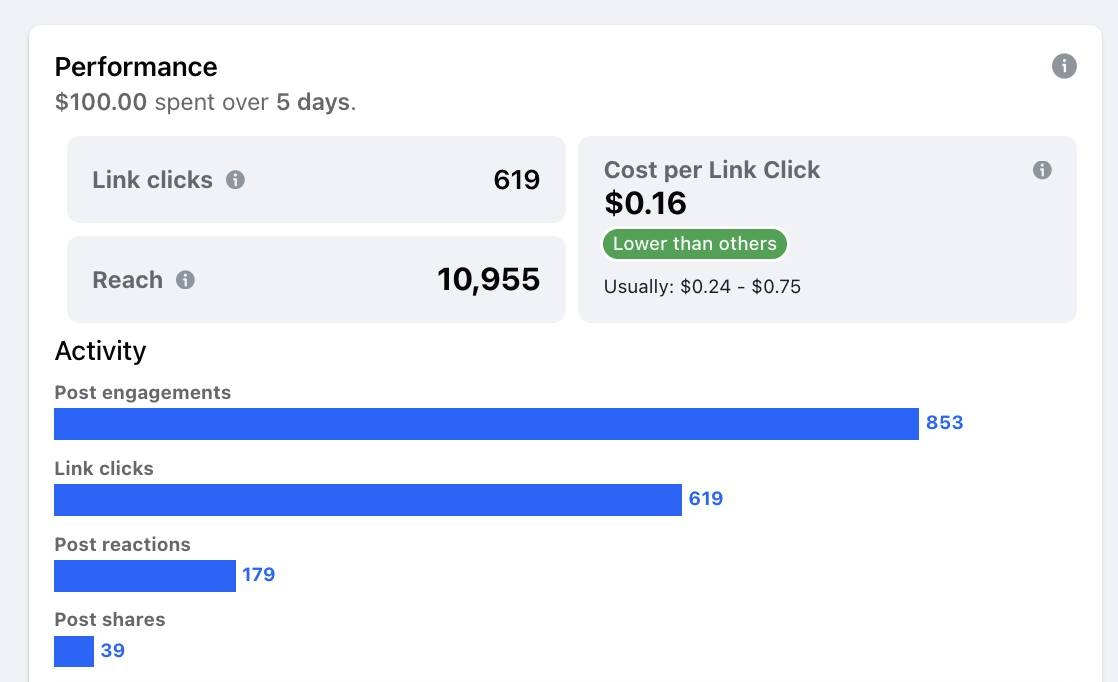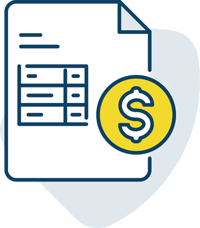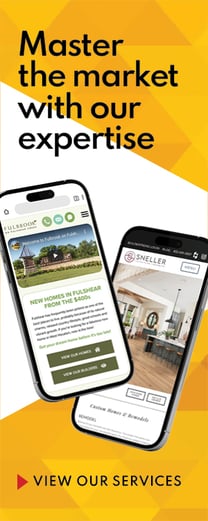TURN CONNECTIONS INTO CUSTOMERS.
Social media isn’t just posts and likes—it’s a conversation. Engage, connect, and build real relationships that drive real results.
Social Media Marketing =
Bold Creativity + Smart Strategy
RIDE THE TRENDS. REACH THE RIGHT PEOPLE.
From Facebook to TikTok, YouTube to LinkedIn, we find where your audience lives and craft content that speaks to them. Smart targeting, relevant creativity—real results.

The choice depends on your target audience and business goals. Popular platforms include Facebook, Instagram, Twitter, LinkedIn, Pinterest, and TikTok. Research where your audience spends their time and focus your efforts there.
The optimal frequency for posting on social media can significantly influence your brand's visibility and engagement levels. This frequency is not one-size-fits-all; it varies across different platforms and depends on your specific audience's behavior and preferences.
-
Instagram: Posting once a day is beneficial to maintain a strong presence and keep your audience engaged. However, it's crucial to balance quantity with quality. High-quality posts that resonate with your audience are more likely to generate engagement than multiple lower-quality posts.
-
LinkedIn: Given its professional nature, 2-3 posts per week can be effective. LinkedIn's audience seeks value-driven, informative content that contributes to professional growth or industry insights.
-
Facebook and Twitter: For platforms like Facebook and Twitter, where the feed moves quickly, posting 1-2 times per day can help maintain visibility. The content should be a mix of original and curated material that provides value and encourages interaction.
-
Quality and Consistency: Regardless of the platform, maintaining a consistent posting schedule is key. Use scheduling tools to plan your posts in advance. This helps in staying consistent even during busy periods or holidays. Remember, the quality of your content is paramount. Engaging, high-quality content tailored to the interests of your audience will always outperform frequent, low-quality posts.
Determining whether to use paid social media marketing versus organic strategies depends on your business goals, budget, and the stage of your marketing funnel you're focusing on. Here's a breakdown to help you make an informed decision.
Organic Social Media
Organic social media involves using the free tools provided by each social media platform to build and engage with your audience. This includes posting content, responding to comments, and interacting with users without any paid promotion.
Advantages:
- Cost-effective: It doesn’t require financial investment to post or engage with your audience.
- Builds relationships: Allows for authentic interactions and relationship-building with your audience.
- Brand loyalty: Regular, quality engagement can enhance brand loyalty over time.
Disadvantages:
- Limited reach: Organic reach has been declining on many platforms, making it harder for your content to be seen without promotion.
- Time-consuming: Building a substantial organic presence requires consistent effort and time.
- Slow growth: It may take longer to see significant growth or results organically.
Paid Social Media
Paid social media involves paying for advertisements or sponsored messages on platforms like Facebook, Instagram, Twitter, and LinkedIn to target specific audiences beyond your existing followers.
Advantages:
- Amplified reach: Paid ads can significantly increase your content's visibility beyond your current audience.
- Targeted audiences: Allows for precise targeting based on demographics, interests, behaviors, and more.
- Faster results: Paid campaigns can quickly drive traffic, leads, and sales.
Disadvantages:
- Costs money: Requires a budget, which can grow depending on your campaign's scale and objectives.
- Requires expertise: Designing effective campaigns and optimizing for conversions can be complex.
- Short-lived: Once the campaign ends, the traffic or engagement typically drops off unless sustained with ongoing investment.
Making the Decision
Align with Goals: If your primary goal is brand awareness or reaching a new audience quickly, paid social media can provide the immediate boost you need. For long-term community building and engagement, organic strategies are essential.
Consider Your Budget: Small businesses or startups with limited budgets might focus on organic growth initially. Those with more resources might use a mix of both to maximize reach and engagement.
Evaluate Your Resources: If you have the time and capability to create engaging content and interact with your audience, organic social media can be highly effective. If you're looking to scale quickly and have the budget, paid social media can accelerate your growth.
Test and Measure: The best approach is often a combination of paid and organic strategies. Test different methods to see what works best for your brand and audience. Use analytics to measure the performance and ROI of both approaches, adjusting your strategy based on data-driven insights.
Ultimately, the choice between paid and organic social media should be based on a strategic assessment of your marketing goals, budget, and resources, along with continuous testing and optimization to find the right balance for your business.
Measuring the success of your social media marketing efforts is crucial for understanding the impact of your strategies and making informed decisions to improve. Here's how to dive deeper into this process:
1. Define Clear Objectives: Before measuring anything, be clear about what you aim to achieve with your social media efforts. Common goals include increasing brand awareness, driving website traffic, generating leads, or boosting sales. Your objectives will dictate which metrics are most relevant to you.
2. Utilize Platform Analytics: Most social media platforms offer built-in analytics tools that provide a wealth of data on how your content is performing. For example:
- Facebook Insights offers data on page views, engagement, and post reach.
- Instagram Insights provides metrics on followers' growth, post engagement, and story views.
- Twitter Analytics shows tweet impressions, engagements, and follower growth.
3. Key Metrics to Track: Depending on your goals, these are some of the metrics you might consider:
- Engagement Rate: Includes likes, comments, shares, and saves. High engagement rates indicate that your content resonates with your audience.
- Reach and Impressions: Measure how many people have seen your post. A growing reach indicates increasing brand awareness.
- Follower Growth: Tracks how your audience is expanding over time.
- Website Traffic: Monitors the number of visitors directed to your website from social media.
- Conversion Rate: Measures how many of those social media interactions lead to a desired action (e.g., sales, sign-ups).
4. Set Benchmarks and Goals: Use your initial metrics as a baseline and set realistic goals for improvement. Regularly review your performance against these goals to assess progress.
5. Adjust Based on Insights: Analyze your data to understand what’s working and what’s not. Use these insights to refine your strategy, experimenting with content formats, posting times, and audience targeting to optimize your results.
A social media marketing agency employs a combination of strategies, expertise, and tools to boost engagement on your social media posts. Their approach is typically multifaceted, focusing on both creative content and data-driven tactics. Here's how an agency might work to increase engagement on your social media platforms:
1. Content Strategy Development
- Audience Analysis: Agencies begin by deeply understanding your target audience, including their interests, behaviors, and online activity patterns. This insight helps in creating content that resonates with your audience.
- Content Calendar: They plan a content calendar that outlines what to post, when to post, and where to post, ensuring a consistent and strategic approach to content that engages the audience.
2. Creating High-Quality, Engaging Content
- Visual and Written Content: Agencies produce professional, high-quality images, videos, and written content tailored to your brand voice and audience preferences.
- Interactive Content: They incorporate interactive elements like polls, quizzes, and contests to encourage audience participation.
- Trending Topics: Agencies leverage trending topics and hashtags to make content more discoverable and relevant, increasing the likelihood of engagement.
3. Optimization and Timing
- Best Posting Times: By analyzing data, agencies identify the optimal times to post content when your audience is most active, increasing visibility and engagement.
- Platform-Specific Strategies: They tailor content and tactics to the specifics of each platform, maximizing engagement opportunities on each.
4. Engagement and Community Management
- Active Engagement: Agencies actively manage your social media accounts by responding to comments, messages, and mentions, fostering a community around your brand.
- User-Generated Content: They may encourage and share user-generated content, which can significantly boost engagement and trust in your brand.
5. Analytics and Adjustments
- Performance Tracking: Agencies use advanced tools to track engagement metrics closely, such as likes, shares, comments, and overall reach.
- Strategic Adjustments: Based on performance data, agencies continuously refine and adjust strategies to improve engagement rates, experimenting with different types of content, posting schedules, and engagement tactics.
6. Ad Campaign Management
- Paid Advertising: Beyond organic strategies, agencies can design and manage targeted ad campaigns to boost post visibility and engagement among specific audiences.
- A/B Testing: They often employ A/B testing with different ad elements to identify what works best, optimizing campaigns for higher engagement.
7. Influencer Partnerships
- Influencer Collaboration: Agencies may collaborate with influencers to expand your reach and engagement through authentic and relatable content to the influencer's followers.
By combining these strategies with their expertise and tools, social media agencies aim to significantly enhance the engagement on your posts, contributing to greater brand visibility, audience growth, and ultimately, business success. This holistic approach, customized to align with your specific business goals and audience, ensures that every post contributes effectively towards engaging your audience and enhancing your social media presence.
The cost of advertising on social media can vary widely based on several factors, including the platform you choose, your target audience, the competitiveness of your industry, the time of year, and your advertising goals (such as brand awareness, lead generation, or sales). Here’s a breakdown of factors that affect costs and approximate ranges for popular platforms:
1. Platform
Each social media platform uses its own advertising model, which can influence the cost:
- Facebook: Known for its detailed targeting options, Facebook advertising costs can range widely. On average, cost-per-click (CPC) might be between $0.50 and $2.00, while cost-per-thousand-impressions (CPM) can range from $5.00 to $25.00, varying by industry and target audience.
- Instagram: Being highly visual, Instagram often sees higher engagement rates but can be more expensive, with CPCs often ranging from $0.70 to $1.00 and higher.
- LinkedIn: Targeting professionals, LinkedIn advertising is typically more expensive, with average CPCs ranging from $2.00 to $5.00, reflecting its B2B focus.
- Twitter: Costs on Twitter can be more variable, with average CPCs ranging from $0.50 to $3.00.
- TikTok, Snapchat, and Pinterest: These platforms are newer to the advertising game, and costs can vary significantly. However, they offer unique opportunities to reach specific demographics.
2. Ad Format
The format of your ad (e.g., video, carousel, sponsored content) can also affect the cost. Video ads, for example, might cost more than image-based ads due to higher engagement rates.
3. Bidding Strategy and Budget
Most social media platforms use a bidding system for ad placement. You can set a daily or lifetime budget for your campaign, and your costs will also depend on the bid strategy you choose (e.g., cost per click, cost per impression, cost per action).
4. Target Audience and Competition
The more competitive your target audience, the higher your costs may be. Advertising costs tend to be higher in industries with high customer lifetime values, such as finance, insurance, and education.
5. Campaign Objectives and Duration
Your campaign's objectives (awareness, consideration, conversion) and its duration will also influence your overall advertising costs. Campaigns aimed at conversions or sales can often cost more per action than those aimed at increasing brand awareness.
Planning Your Budget
To plan your social media advertising budget, start small and test different approaches to see what works best for your business. Monitor your campaigns closely using platform analytics to understand where your money is going and to adjust your strategies for better ROI. Keep in mind that social media advertising costs are subject to change and can vary widely from one business to another based on the factors mentioned above. Always refer to the latest data from the platforms you’re interested in for the most current information.
YOUR B2B CLIENTS
ARE SOCIAL, TOO
MAKE COMPLEX SIMPLE.
MAKE CONNECTIONS LAST.
Turn technical B2B concepts into engaging content your audience actually wants—stories they’ll watch, read, and remember.
Successful social media outreach starts with having a plan.
AUIDIENCE SEGMENTING
KNOW YOUR AUDIENCE. REALLY KNOW THEM.
Age and income don’t tell the whole story. To connect, you need to understand what people value, what drives them, and why they choose one brand over another. Tools like PRIZM go beyond the basics—giving you the insights to reach the right people, the right way.
SOCIAL MEDIA PLANNING
MOVE HEARTS. DRIVE DECISIONS.
People don’t just think their way to a decision—they feel it. Social media, when done right, taps into that emotion, leaving a lasting impact. Pair it with smart strategy, and you’ll reach the right people, at the right time, with the right message. And that’s how you win.
BRAND POSITIONING
Branding is more than a look—it’s a story. A feeling. A promise. From color and typography to messaging and imagery, every detail shapes how you're seen. But without strategy, it’s just decoration. The magic happens when identity and strategy work together—building trust, driving recognition, and making your brand unforgettable.
SOCIAL MEDIA THAT MAKES AN IMPACT.
From strategy to content, we craft social campaigns that connect, engage, and leave a lasting impression on the right audience.
Social Media Strategy
Crafting tailored strategies to enhance your brand's presence and engagement on social media platforms.
Profile Creation and Optimization
Establishing and fine-tuning social media profiles to maximize visibility and impact.
Paid Social Advertising
Leveraging paid advertising tools on social media to expand reach and drive targeted campaign results.
Social Media Monitoring
Continuously tracking social media channels for brand mentions, customer feedback, and industry trends.
Audience Segments and Targeting
Identifying and targeting specific audience segments for more personalized and effective campaigns.
Social Media Story Creation
Crafting compelling stories for social media to boost engagement and connect with audiences.
The bigger picture
Marketing your business requires thoughtful strategy and execution, from the ground up. The price is high for failure, both in time and waste.
Get on our mailing list

LEARN WHAT IT MEANS
TO BE ON-TARGET!
Whatever you're up against, rest assured that after 20 years we've probably seen it. Let's connect and get to know each other.

GET AN ESTIMATE
Discover how we can transform your project ideas into reality. Start with a free, no-obligation estimate today..
